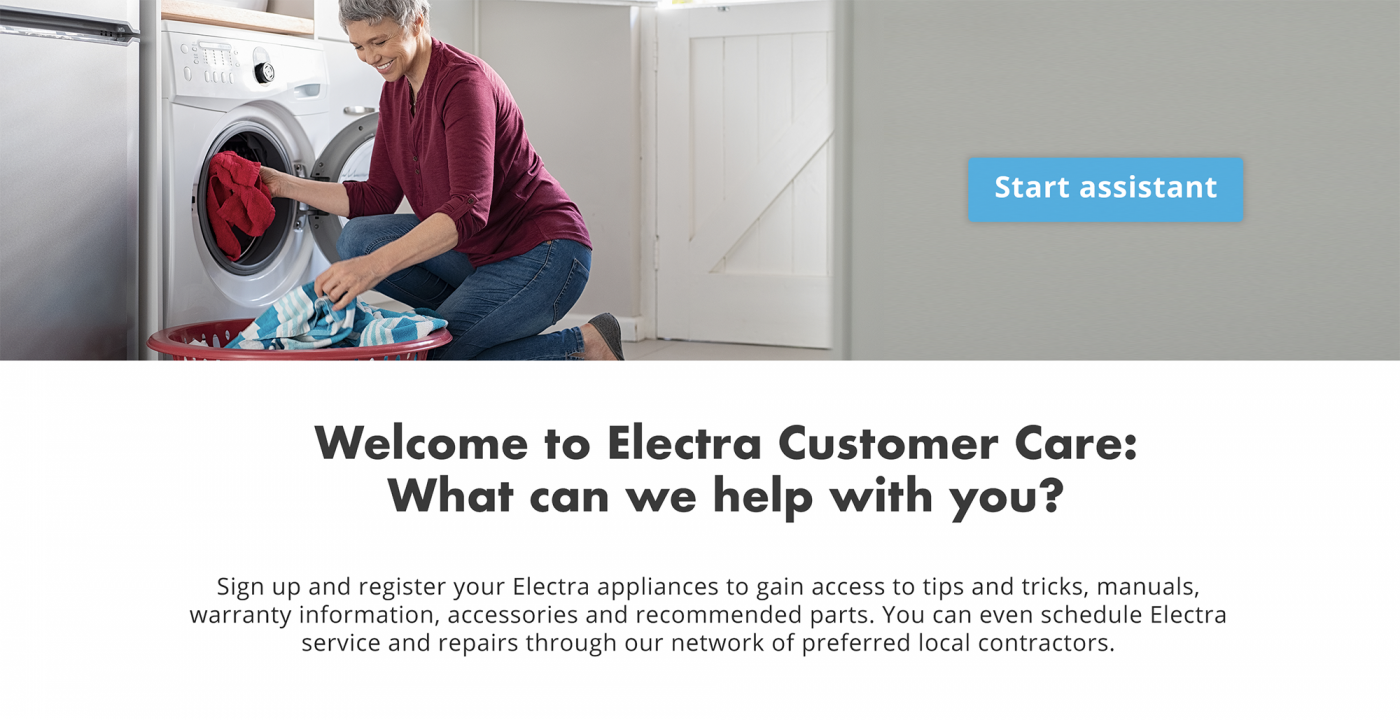80% of consumers want brands to provide post-purchase support, this extends to tips, troubleshooting, and making it easier to do self-diagnostics and repairs without calling a technician. Consumers want access to reliable, easy to navigate self-service experience to make repairs, whether they are an avid DIY-er, budget-conscious, or somewhere in between, they want the option to manage the process. The need for brands to produce post-purchase always available assistance is more urgent than ever as consumers around the world remain under stay at home orders. The combination of not being able to have a technician come into their home with becoming more self-reliant means consumers will continue to want to manage repairs by themselves. By providing individualized step-by-step guidance for troubleshooting or repairs, brands and retailers extend the customer life cycle, improve the customer journey, and increase customer satisfaction.
Consider the standard “repair or replacement” experience consumers face countless times with electronics or appliances. Let’s walk through it using the example of a suddenly suction less vacuum. This is how it goes: I realize something is wrong, a moment of dread or panic occurs, proceeding by checking to see if anything is stuck, and when there is no obvious solution or reason, I take my phone out to search for guidance on what is wrong and how to fix it.
There’s a strong chance my search results come from numerous sources lacking credibility, if I’m lucky the brand publishes their own troubleshooting advice online. If not, I spend time searching for a solution from sources I cannot trust or find repair shops? Order the wrong part? Order the right part and need to use a complicated user manual?
Under normal circumstances, consumers feel frustrated and concerned about when and how they will get the product fixed. In today’s environment, your customer faces increased difficulty with repairs and replacements, so how do you help them? By providing post-purchase experiences that guide them through questions and answers to help them resolve product issues that are entirely self-service.
Remember, there is a reason why customer experience and brand loyalty are closely tied to customer lifetime value: brand loyalty develops as the customer engages with a brand across the length of their product usage.
Providing post-purchase experiences to help your customers increases their likelihood to repurchase. Consumers view products as a long-term investment, and want to maximize the ROI they spent on your product; it’s the brand’s responsibility to prove their products are worth reinvesting in.

Creating a personalized, yet entirely self-service digital experience means leveraging digital assistants through the most common post-purchase customer experiences.
3 ways to use digital assistants in the post-purchase journey
Self-Diagnostics & Troubleshooting
Instead of leaving your customer to endlessly search online for solutions on how to fix a product, your brand has a guided “self-diagnosis” advisor to help the customer identify why their product is not working and how to fix it. Through a series of questions-and-answers, the customer can find an immediate resolution to their problem and receive brand-backed expertise on any next steps. If the resolution requires a replacement part, the customer is led to a product page; if an expert technician is needed, they can be directed to a directory of service providers to schedule in-person help.
Use delivery confirmation emails to re-engage & guide
In the event that there wasn’t an immediate resolution solved through standard troubleshooting, and the customer purchased a replacement part, use delivery emails to notify the customer that you have step-by-step guidance available for them online. Chances are your customer journey already includes the post-delivery follow-up email, so this is an effective, and easy, way to re-engage the customer to inform them you have a self-service advisor to walk them through how to replace the part.
Provide step-by-step assistance for DIY repairs
Let’s be honest: using an automated phone support service system is often finicky and creates more frustration than help. What if a customer could navigate through repairs and troubleshooting on their phone or computer with the confidence of your expertise guiding them? By delivering a personalized, self-guided support experience online the customer can take their time with each step and gives them an increased sense of ownership to product ownership.
There is a significant opportunity for brands and retailers to be more integrated into the post-purchase customer journey by providing guided assistance on common repairs or troubleshooting. It’s a win-win for both the customer and brand–the customer doesn’t have to worry about scheduling a technician to come in, and the brand learns valuable insight on the lifetime value of their products and how to better support customers to drive brand loyalty for years to come.


